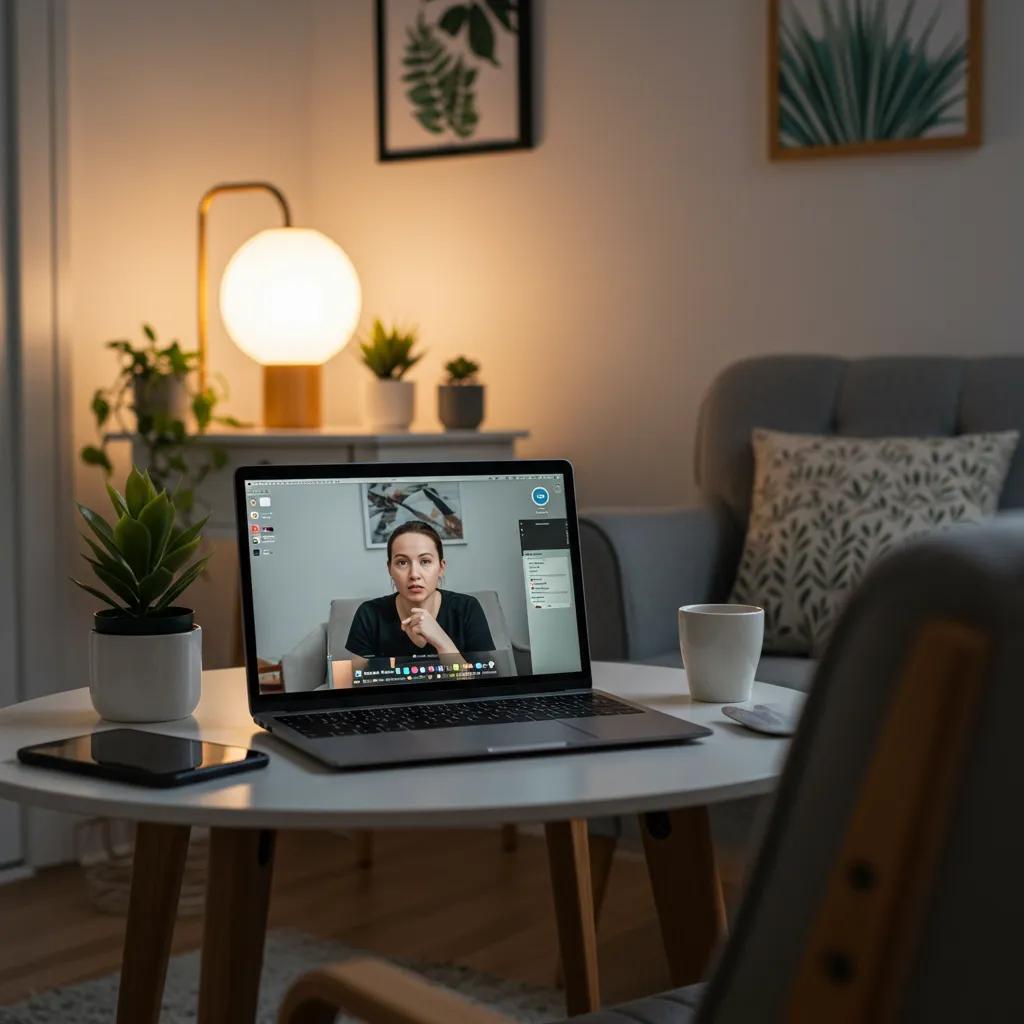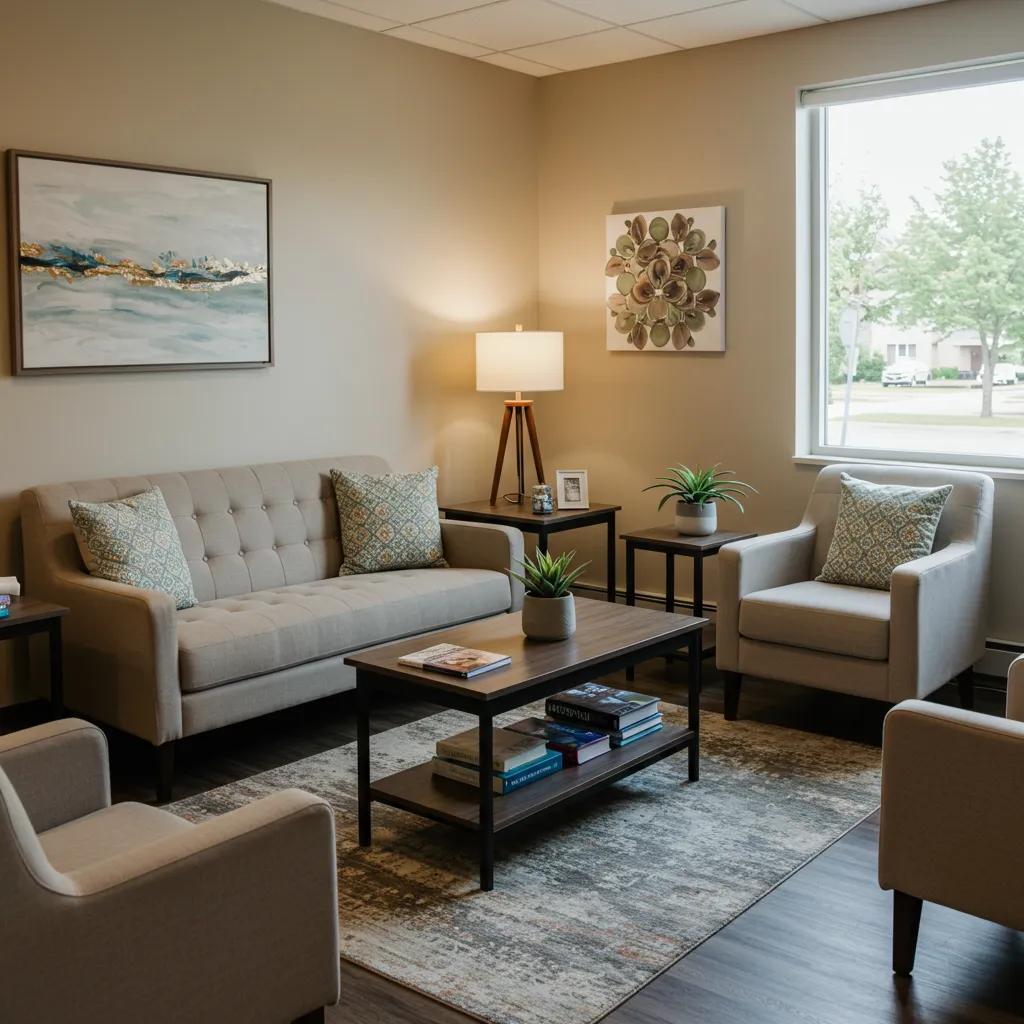Managing Anxiety
Anxiety can be a challenging experience, but there are various techniques that can help individuals find relief. In this section, we will explore two effective methods for managing anxiety: breathing techniques and visualization methods.
Breathing Techniques
Breathing exercises are a simple yet powerful tool for managing anxiety. These exercises help relax the body and mind by controlling heart rate and breathing patterns when feeling anxious. By focusing on your breath and practicing deep, intentional breathing, you can activate the body’s relaxation response and reduce anxiety symptoms.
One popular breathing technique is diaphragmatic breathing, also known as belly breathing. To practice this technique, follow these steps:
- Find a comfortable position, either sitting or lying down.
- Place one hand on your chest and the other on your belly.
- Take a slow, deep breath in through your nose, allowing your belly to rise as you fill your lungs with air.
- Exhale slowly through your mouth, focusing on releasing tension and letting go of any anxious thoughts or feelings.
- Repeat this process several times, allowing each breath to be slow, deep, and steady.
Another effective breathing technique is 4-7-8 breathing. This technique involves inhaling for a count of 4, holding the breath for a count of 7, and exhaling for a count of 8. This pattern helps regulate the nervous system and promote relaxation.
Visualization Methods
Visualization methods can also be helpful in managing anxiety. By visualizing a calming and happy place, you can calm the brain and body during moments of anxiety. To practice visualization, follow these steps:
- Find a quiet and comfortable space where you can relax.
- Close your eyes and take a few deep breaths to relax your body.
- Imagine a place that makes you feel calm and at ease. It could be a beach, a forest, or any location that brings you a sense of peace.
- Visualize the details of this place, imagining the colors, sounds, and scents associated with it. Engage all your senses to make the visualization more vivid.
- As you continue to visualize, focus on your breath and allow yourself to fully immerse in the experience of being in this tranquil place.
- Stay in this visualization for a few minutes, allowing yourself to feel the relaxation and serenity it brings.
Practicing breathing techniques and visualization methods regularly can help individuals effectively manage their anxiety. These techniques can be used in various settings and can be especially beneficial during moments of heightened anxiety or stress. For more information on anxiety management techniques and other therapeutic options, consider exploring our article on exposure therapy for anxiety: how it works.
Remember, if anxiety persists and significantly interferes with daily life, it may be beneficial to seek professional help. Therapeutic options and medication considerations can be explored with a mental health professional. By taking proactive steps and utilizing these techniques, individuals can work towards finding relief from anxiety and regaining control of their lives.
Physical Relaxation
When it comes to managing anxiety, incorporating physical relaxation techniques into your routine can be highly effective. These techniques focus on releasing tension in the body, which can help reduce anxiety levels and promote a sense of calm. In this section, we will explore two physical relaxation techniques: muscle relaxation and counting techniques.
Muscle Relaxation
Muscle relaxation exercises can help alleviate the physical symptoms of anxiety by targeting muscle tension. By intentionally relaxing your muscles, you can send signals to your brain that it’s safe to release the built-up tension. This technique can be particularly helpful during anxious moments.
To practice muscle relaxation, find a quiet and comfortable space where you can sit or lie down. Follow these steps:
- Start by taking a few slow, deep breaths to center yourself.
- Begin with one muscle group, such as your hands or shoulders.
- Tense the muscles in that group for a few seconds, then release and let them relax completely.
- Focus on the sensation of relaxation in that muscle group before moving on to the next one.
- Repeat this process for different muscle groups throughout your body, working from head to toe.
By systematically tensing and relaxing each muscle group, you can promote a deep sense of relaxation and release tension from your body. For a more detailed guide on muscle relaxation exercises, you can refer to our article on muscle relaxation techniques.
Counting Techniques
Counting techniques can be a simple yet effective way to redirect your focus away from anxious thoughts and onto a calming activity. By engaging in counting exercises, you provide your mind with a different point of focus, helping to break the cycle of anxious thinking.
One counting technique involves counting slowly in your mind or out loud. For example, you can count from one to ten, focusing on each number and giving yourself time to inhale and exhale between each count. This technique can be particularly useful in crowded or busy spaces where you may feel overwhelmed.
Another counting technique is to count your breaths. Take slow, deep breaths and count each inhale and exhale. Focus on the sensation of your breath entering and leaving your body, allowing it to anchor you in the present moment.
Experiment with different counting techniques to find the one that works best for you. The goal is to shift your attention away from anxious thoughts and onto the act of counting, helping to promote a sense of calm and relaxation. For more information on managing anxiety and tips for relaxation, you can visit our article on anxiety management strategies.
Incorporating physical relaxation techniques like muscle relaxation and counting techniques into your daily routine can be beneficial for managing anxiety. Remember that everyone’s experience with anxiety is unique, and it may take some trial and error to find the techniques that work best for you. If you find that your anxiety persists or significantly interferes with your daily life, it may be helpful to seek professional help from a therapist or explore other therapeutic options.
Mental Relaxation
When it comes to managing anxiety, finding ways to relax the mind is essential. Two effective techniques for mental relaxation are mindfulness practices and present-moment awareness.
Mindfulness Practices
Practicing mindfulness involves intentionally bringing one’s attention to the present moment without judgment. It allows individuals to observe their thoughts and feelings without becoming overwhelmed by them. Mindfulness exercises can help create a calm state of mind when thoughts are racing and anxiety is building.
One common mindfulness practice is mindful breathing. This involves focusing on the sensation of each breath, paying attention to the inhalation and exhalation. By redirecting the attention to the breath whenever the mind wanders, individuals can cultivate a sense of calm and reduce anxiety.
Another mindfulness technique is body scan meditation. This involves systematically bringing awareness to different parts of the body, noticing any sensations or tensions present. By observing these physical sensations without judgment, individuals can develop a greater sense of body awareness and promote relaxation.
Present-Moment Awareness
Similar to mindfulness, present-moment awareness involves focusing on the present moment rather than getting caught up in worries about the past or future. It entails fully engaging with one’s current experience, whether it’s a simple task or a moment of relaxation.
Practicing present-moment awareness can help individuals shift their attention away from anxious thoughts and bring their focus to the here and now. By immersing themselves in their surroundings and activities, individuals can find relief from anxiety and experience a greater sense of peace.
One way to cultivate present-moment awareness is through sensory grounding techniques. This involves engaging the senses by noticing the sights, sounds, smells, tastes, and textures in the present moment. By actively observing and appreciating these sensory experiences, individuals can anchor themselves in the present and reduce anxiety.
Incorporating mindfulness practices and present-moment awareness into daily life can significantly contribute to managing anxiety. These techniques can help individuals cultivate a calmer state of mind, reduce anxious thoughts, and enhance overall well-being. For more information on anxiety and available treatments, visit our articles on how many adults have anxiety and how do i know if i have ptsd or anxiety?.
Impact of Anxiety
Anxiety can have significant effects on an individual’s daily life and overall well-being. It is important to understand the various ways in which anxiety can impact both our day-to-day activities and our health.
Daily Life Effects
Anxiety can significantly interfere with various aspects of daily life. It can affect a person’s career, hobbies, self-esteem, and daily activities such as driving, working, studying, shopping, and socializing. The constant worry and fear associated with anxiety can lead to limitations in physical and mental health. Individuals with severe anxiety may find it difficult to engage in these activities, hindering their ability to live a fulfilling life [2].
Anxiety can create a sense of discomfort and unease, making it challenging for individuals to step out of their comfort zones, try new things, or take personal risks for growth. This can lead to a restricted lifestyle and prevent individuals from fully experiencing and enjoying life.
Health Consequences
Anxiety can have both physical and mental health consequences. Physically, anxiety can manifest as a fast heartbeat, sweating, dizziness, muscle tension, and headaches. These physical symptoms can be distressing and contribute to a sense of unease.
Mentally, anxiety can lead to persistent worry, restlessness, difficulty concentrating, irritability, and sleep disturbances. These mental symptoms can impact an individual’s overall well-being, making it challenging to focus, relax, and engage in daily activities.
Moreover, anxiety can contribute to the development or exacerbation of other mental health conditions, such as depression or post-traumatic stress disorder (PTSD). It is essential to recognize the signs and symptoms of anxiety and seek appropriate help and support to prevent further complications.
If you or someone you know is experiencing anxiety that significantly impacts daily life, it is important to seek professional help. There are various therapeutic options, such as counseling, cognitive-behavioral therapy (CBT), and exposure therapy, that can help individuals manage and overcome anxiety [4]. In some cases, medication may also be considered as part of the treatment plan. Consulting with a healthcare professional, such as a general practitioner, can provide guidance and support in finding the most suitable treatment approach.
Remember, anxiety is a treatable condition, and with the right support, individuals can learn effective coping strategies and regain control over their lives.
Seeking Help
When anxiety becomes overwhelming and starts to interfere with daily life, seeking professional help is a crucial step towards finding relief. There are various therapeutic options and medication considerations available to individuals struggling with anxiety.
Therapeutic Options
Psychotherapy, medication, or a combination of both are common treatments for anxiety disorders. One widely studied form of psychotherapy is cognitive-behavioral therapy (CBT). CBT helps individuals with anxiety disorders by teaching them different ways of thinking, behaving, and reacting to situations, ultimately reducing anxiety and fear [6].
Another form of therapy used for anxiety disorders is exposure therapy. This method, which falls under the umbrella of CBT, focuses on confronting the fears underlying anxiety disorders. By gradually and safely exposing individuals to feared situations, they can learn to engage in activities they have been avoiding. Exposure therapy is sometimes combined with relaxation exercises to help manage anxiety during the process. To learn more about how exposure therapy works, check out our article on exposure therapy for anxiety: how it works.
Acceptance and commitment therapy (ACT) is another treatment option that employs strategies such as mindfulness and goal setting to reduce discomfort and anxiety. While ACT is a newer form of psychotherapy compared to CBT, it shows promise in helping individuals with anxiety disorders. However, there is relatively less available data on its effectiveness compared to CBT.
In addition to therapy, stress management techniques such as exercise, mindfulness, and meditation can be beneficial for reducing anxiety symptoms. When used in conjunction with other treatments, these techniques can enhance the effects of psychotherapy and promote overall well-being [6].
Medication Considerations
Medication can also be an option for managing anxiety disorders. Antidepressants, anti-anxiety medications (benzodiazepines), and beta-blockers are commonly prescribed to help relieve symptoms. It’s important to note that while these medications can provide relief, they do not cure anxiety disorders. They are typically used as part of a comprehensive treatment plan that may include therapy.
If considering medication for anxiety, it’s essential to consult with a healthcare professional who can assess your specific situation and prescribe the most appropriate medication. They will evaluate factors such as the severity of symptoms, medical history, and potential interactions with other medications. It’s important to follow the prescribed dosage and inform your healthcare provider of any side effects or concerns.
Remember, seeking help is an important step in managing anxiety. Whether through therapeutic options, medication considerations, or a combination of both, there are effective treatments available to help individuals alleviate anxiety symptoms and improve their overall well-being. If you’re unsure whether you have anxiety or another related condition, check out our article on how do I know if I have PTSD or anxiety?.
Resources
- [1]: https://www.healthline.com/health/anxiety-exercises
- [2]: https://www.mentalhealth.com/library/anxiety-impact-on-daily-life
- [3]: https://www.mentalhealth.org.uk/explore-mental-health/a-z-topics/anxiety
- [4]: https://www.nimh.nih.gov/health/topics/anxiety-disorders
Did You Know? According to WHO, one out of every seven teens is struggling with some sort of mental illness.










